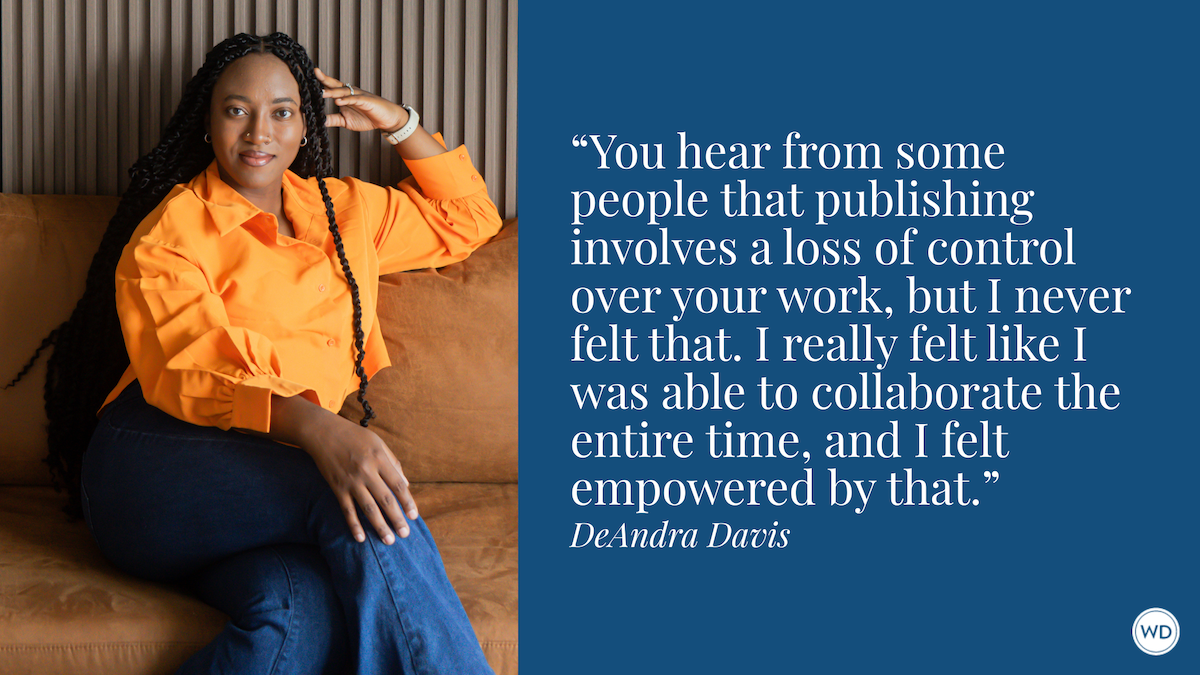How to Write a Nonfiction Book Outline
You have an idea for a nonfiction book. Now what? Author Rick Lauber shares how outlining before writing can help you decide what to put on the page—and what to save for later.
Watching a professional chef at work in the kitchen can be pure magic. They seem to effortlessly create delicious dishes. But the chef can’t cook a meal without having a recipe to follow. Similarly, a writer needs to have a recipe before creating a written work.
A writer’s recipe is their outline. Writers can think of an outline as a collection of necessary ingredients and tools and a planned approach to creating a book. Prior to authoring my two books, I wrote outlines. While I was excited to jump right in and start book writing, outlining helped me prepare for the task ahead, visualize my books, save time, and feel far more confident with pitching my books to a publisher.
Writing a book outline doesn’t have to be onerous. Here are a few recommendations to get you started.
Tips on Writing A Nonfiction Book Outline
Summarize Your Book
Ask yourself some pointed questions. Be honest and realistic with your answers. What is your book about? Why would someone want to read it? How will you capture and maintain a reader’s interest? To achieve your desired result of a published book, you must know your anticipated outcome and clearly identifying this goal right initially can be of great help. Not all writers can just sit down at a computer and create a masterpiece.
Instead, they will first develop an idea as a base and then create a more detailed and thorough story, article, guest blog, or book from that idea. To avoid undue frustration here, try reading the back cover notes on other books. Other authors and publishers have already collaborated here and their comments could give you a better idea of what to say and how to say it.
Summarize Your “Take Away” Points
What do you want a reader to learn from your book? For me, I wanted to educate and enlighten readers as to the importance of eldercare, gently help and support them to take action steps, and recommend resources where help could be found.
There are other reasons to write a book of course … do you want to convince your readers? Do you want to help them overcome a problem? Do you want to motivate them to make a positive change?
Consider Your Book’s Structure
In my case, writing chronologically was a sensible approach. I began by sharing my own caregiving story with my parents and then moved on with general issues as they arose as Mom and Dad grew older and their health worsened. By focusing on these matters as they happened in individual chapters, I realized that my readers could better relate; realize that senior caregiving is a more manageable, step-by-step process; and not become overwhelmed.
Create a Mind Map
Here you will begin to explore what needs to be said in your book. You can forego formality here—simple bullet points will be ample to capture your thoughts. Like that professional chef, try experimenting with your recipe by adding different ingredients and see what you come up with. Hang a large piece of paper on your wall and begin with writing down your main idea in a circle in the middle of the page. This will be your book’s “main dish.”
Next, brainstorm ideas or topics launching from your book’s subject matter (as “side dishes”). Highlight more important points by using a different-colored marker, connecting related topics with arrows, or adding other visuals. When I was outlining, my central topic of “caregiving for seniors” easily branched out to other topics. As an example, “Moving a Senior” led to “Downsizing a Senior’s Home,” “Hiring a Professional Mover,” “Exploring Other Means of Senior Transportation,” and “Choosing a Long-Term Care Home.” Mind mapping may be the most fun process for you as you can stretch your creative juices.
Mind map each proposed chapter as well. Once again, note down your main idea and supporting information. Include researched facts and interview comments from subject matter experts but don’t overlook personal stories. As a writer, you may well have insights in or experience with your proposed book content. I shared numerous personal parental caregiving stories in my books and have heard from readers they can relate to these stories and have learned valuable lessons from them.
As a former co-caregiver who can speak candidly, I have also increased my own credibility as an author. All your facts, supporting information, and/or personal stories must, of course, be relevant to what you write. By mind mapping, a writer can better visualize, develop, select, organize, and work with book content ideas.
Edit Your Mind Map
Once you’ve created your mind map, edit it. Remove redundant ideas. Clarify uncertain ideas. Consider time-sensitive facts that will be important now but could become irrelevant and reduce the shelf life of your book. As with other writing projects, editing becomes easier if a writer can leave a finished mind map alone for several days. By doing this, you can clear your head and better focus on the work required. Editing will also help you decide how much attention to give to each topic or subtopic.
If an idea doesn’t work for your planned book, file it for a later writing project. For my work, there were many possible discussion points. Including everything would have been impossible and would have resulted in much longer books than desired (by me, my publisher, and my intended readers). Therefore, these additional topics have become material for me to explore in follow-up newspaper, magazine, and/or blog articles.
Create a Table of Contents
Surprised to see a Table of Contents as a final step? Don’t be. While the Table of Contents is one of the first things a reader will see when cracking open a book, this should be one of the last elements of an outline you develop. The reason for your developing a Table of Contents later is because after summarizing a book concept and mind mapping ideas to write about, organizing those ideas into a Table of Contents should come more easily.
My advice is to create that Table of Contents in a logical manner … a Table of Contents should not only provide for easier and more enjoyable reading, but it should also make for a rational means of organizing thoughts. Writers can’t ask readers to figure out their meaning. Instead, writers must take readers by the hand and gently lead them to a sensible conclusion. If a book is too confusing, it may not be completely read.
Unlike a professional chef, a writer won’t need an apron, cooking utensils, or pots and pans to create a recipe (or outline). By creating a recipe, writers can better cook up a better book and ensure a tastier read.
Rick Lauber is the author of two published guidebooks for caregivers: Caregiver’s Guide for Canadians and The Successful Caregiver’s Guide. In addition, he is a twice-selected story contributor for Chicken Soup for the Soul and an established freelance writer. www.ricklauber.com.








